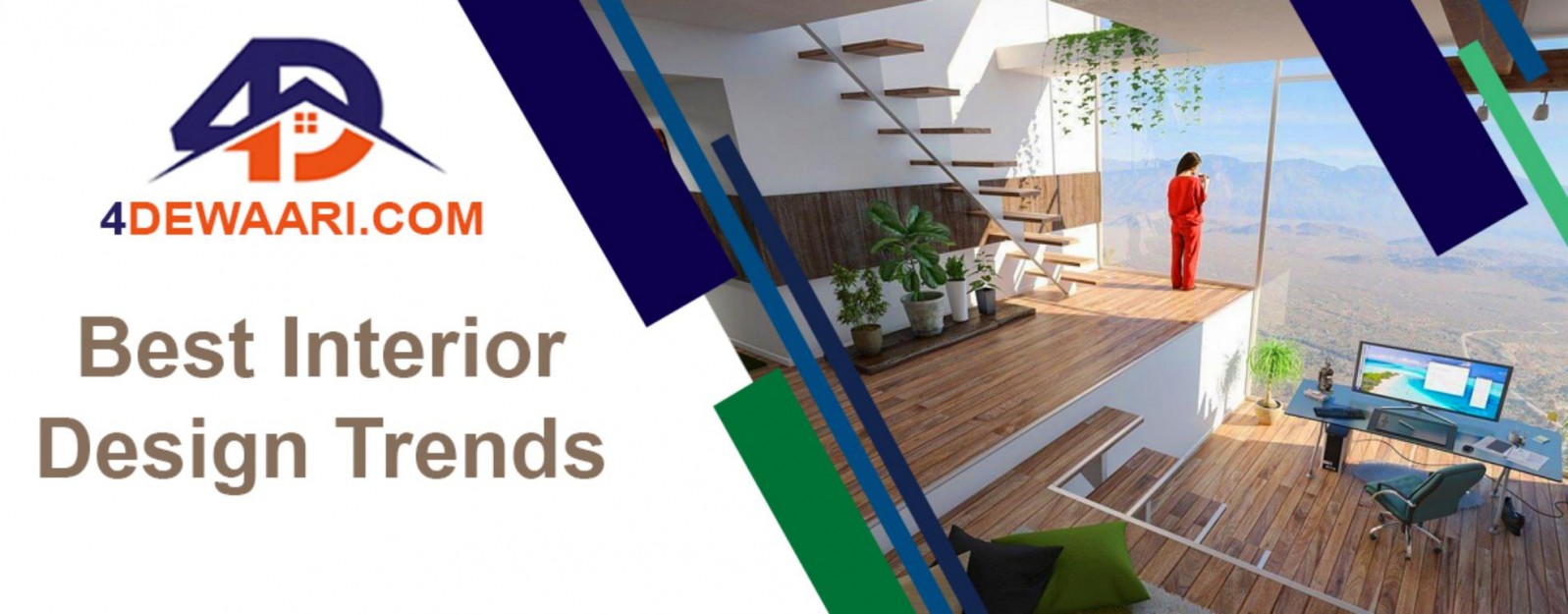Time is fast-changing and the traditional way of doing things is also giving way to innovative and contemporary interior designs that involve much more than deciding which drapes tie the room together. Although those selections still matter yet these are just a part of the bigger picture. Interior design is both science and art! It has to do with how our brains and bodies react to the space around us. And it is the job of an interior designer to shape those feelings or sensations in a positive direction that makes someone want to spend time in a room and feel welcome in an engaging way. It can be possible by applying these Current Best Interior Design Trends for Homes to make home-like heaven. Special in Pakistan the interior designers architects in Lahore have big value around the world.
Latest Contemporary Interior Design Trends in 2024
There are many things that you need to take care of in order to create that ambiance around you. For that you can utilize the six core principles of interior designing given below:
- Space
- Lines
- Form or Shape
- Pattern
- Light
- Color
Let’s discuss these building blocks and how they can help you begin your journey to creating the home interior of your dreams and turn a dull-looking living space into a vibrant area.
Space Saving
While all seven elements on this list are indispensable components of interior design and deserve full attention, space is perhaps the most important of them to be emphasized upon. The interior design space saving ideas are the concepts, specifically, the balance of negative and positive space is crucial. The empty space giving a room a lofty and “open” feel is called negative space. The space filled with decors, such as a living room couch, dining table and kitchen island, is called positive space and they should be treated as such to bring harmony in the house.
Try to figure out the best design for the floor, walls and the floor. The balance between these two forms of space —not too crowded, but not too sparse. And it’s uniquely based on your home.
Clean Lines Trends
Another element leveraged by interior designers to shape how our brain perceives space is line. Clean lines interior designs come with different designs (an interior designer knows what lines are). There are three main types of lines:
- Horizontal
- Vertical
- Dynamic
For example, if you want a more earthy, secure, cozy and stable feel, use horizontal lines. Vertical lines, on the other hand, make spaces feel lofty and airy.
For a more tranquil and peaceful feeling to a room, horizontal lines are preferable. They ground the space and make it feel wider and more expansive. However, if you have too much of this design element, your space can quickly become dull, lacking the visual appeal that comes with vertical and dynamic lines, so go as per the other combinations.
Perpendicular to horizontal lines, verticals draw your eyes upward, towards the ceiling. For example, if your home boasts amazing tin ceiling tiles, a good interior designer will incorporate vertical lines that subconsciously lift your eyes up to highlight that feature. However, if vertical lines are used too frequently, it can cause people to feel confined. The suggestion is to decide whether it is the floor or the ceiling that should be the center of attention.
These lines suggest movement and stimulation in a charming way. They are active and encourage your eyes to “move” in the direction of the line or notice the pattern.
Zigzag, angular, and curved lines fall into this category, as each provides a different movement or effect on the total outlook of the room. Zigzag and angular lines give energy and life to a room, while smooth and curvy lines promote softness, smoothness and balance. These are unique in the way that they involve a beguiling matrix of shapes or designs.
Interior Designs Shape Elements
The second most crucial element in interior designing is the lines that produce a shape is called a form. Lines, whether horizontal, vertical or dynamic, give birth to shapes and these shapes are diverse that you choose from. These shapes can either be geometric (angular) or natural (curved) and it is you who is to decide. They can also be open or closed. In case you do not get your head around it, no problem, the interior designer has a firm grasp of your style, they can mix and match forms to achieve any feel you want in your home, whether that be earthy, modern, warm, cool or whatever. You just need to ask him your choice and the rest will be reflected in your room/office or house.
See Also
Home Decoration Ideas in Pakistan
Pattern in Interior Design
Patterns also carry a very important role in interior design pattern trends . A pattern is a collection of lines and forms, making it a part of the “line” family of elements along with the form. Like shapes, patterns accentuate a certain part of your interior, be it the ceiling, stairs, walls etc. You can accomplish this effect with a bold statement wallpaper or loud color pop on a wall or any other design you like. Patterns don’t have to be married to the walls. You can use them anywhere, from the grain in wood, to picture frames, drapes, pillows, and more. Incorporating patterns into your home presents an endless array of options and the aesthetics it being to the room is just awesome.
Natural Lighting Trends
If you have ever heard of “mood lighting,” then you would be familiar with this element of interior design. This is quite uncontentious that lighting can set the mood of any room, as different types of light connote different moods. Natural light can represent warmth and happiness, while artificial fluorescent lighting makes a room feel cold and still whereby bringing it a charming phantasmagoria with them. Make sure that the natural and artificial lighting in interior design must be produced with the design of the house.
Color Trends
Another decisive factor is the natural color palette interior design. Just like traffic lights when driving, colors in interior design connote certain messages and moods, as our brains have been wired to perceive them in a certain way, so look at them through this lens. You can manipulate them to produce the desired feeling you want for your home. It is important to realize different colors inspire different feelings. It’s time to be creative, go for the kill!















